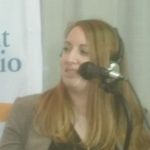I love our sponsors!
Do you want to find more prospects & raise more money? Pursuant is a full-service fundraising agency, leveraging data & technology.
WegnerCPAs. Guiding you. Beyond the numbers.
Credit & debit card processing by telos. Payment processing is now passive revenue for your org.
Get Nonprofit Radio insider alerts!
Listen Live or Archive:
- On Fridays at 1pm Eastern: Talking Alternative Radio and tune in
- Listen to the June 15, 2018 archived podcast
My Guests:
Jessica Meister, Matt Dragon & Justin Greeves: Avoid Website Ageism
How do you design your site to meet the needs of those 65 and over? What about testing with seniors, and accessibility requirements for federally-funded nonprofits? Our panel answers it all. They’re Jessica Meister with Oral Health America; Matt Dragon from Charity Navigator; and Justin Greeves at Porter Novelli. (Recorded at the Nonprofit Technology Conference)
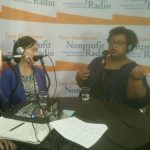
Janice Chan & Danielle Faulkner: Grants For Newbies
Janice Chan and Danielle Faulkner cover the basics of researching and submitting grants. They reveal free resources to find out what’s available, share tips on tracking deadlines, help you prepare for online submissions, and more. Janice is with Johns Hopkins Institutions and Danielle is from Baltimore Community Foundation. (Also recorded at the Nonprofit Technology Conference)
Top Trends. Sound Advice. Lively Conversation.
Board relations. Fundraising. Volunteer management. Prospect research. Legal compliance. Accounting. Finance. Investments. Donor relations. Public relations. Marketing. Technology. Social media.
Every nonprofit struggles with these issues. Big nonprofits hire experts. The other 95% listen to Tony Martignetti Nonprofit Radio. Trusted experts and leading thinkers join me each week to tackle the tough issues. If you have big dreams but a small budget, you have a home at Tony Martignetti Nonprofit Radio.
Get Nonprofit Radio insider alerts!
Sponsored by:
Processed on: 2018-11-11T23:52:37.524Z
S3 bucket containing transcription results: transcript.results
Link to bucket: s3.console.aws.amazon.com/s3/buckets/transcript.results
Path to JSON: 2018…06…394_tony_martignetti_nonprofit_radio_20180615.mp3.632452208.json
Path to text: transcripts/2018/06/394_tony_martignetti_nonprofit_radio_20180615.txt
Hello and welcome to tony martignetti non-profit radio big non-profit ideas for the other ninety five percent. I’m your aptly named host. Oh, i’m glad you’re with me. I’d be thrown into foley dupe aqua if you questioned why you shouldn’t miss today’s show, avoid website ageism how do you design your site to meet the needs of those sixty five and over? What about testing with seniors and accessibility requirements for federally funded non-profits our panel answers at all. They’re jessica meister with orel health america, matt dragon from charity navigator and justin grieves at porter novelli that was recorded at the non-profit technology conference also grants for newbies. Janice chan and daniel faulkner covered the basics of researching and submitting grants they reveal free resource is to find out what’s available. Share tips on tracking deadlines help you prepare for online submissions and mohr. Janice is with johns hopkins institutions, and danielle is from baltimore community foundation that’s also recorded at the non-profit technology conference. I’m tony steak, too thank you. Responsive by pursuant full service fund-raising data driven and technology enabled tony dahna slash pursuant radio and by wagner cpas guiding you beyond the numbers witness cps. Dot com and by tello’s turning credit card processing into your passive revenue stream. Tony dahna may slash tony tello’s here is a void website ageism welcome to tony martignetti non-profit radio coverage of eighteen ntc non-profit technology conference. We’re coming to you from new orleans at the convention center all our ntcdinosaur views are sponsored by network for good, easy to use dahna management and fund-raising software for non-profits this conversation is with jessica meister, matt dragon and justin grieves. Jessica is the web user experience specialist at orel help america. Matt is director of engineering at charity navigator and justin greaves is senior vice president of research. Porter novelli jessica justin welcome, thank you for having welcome to non-profit radio your workshop topic is i’m not the dinosaur. You’re the dinosaur. How your website should keep pace with america’s aging population okay, let’s, start down the end there. Justin, who thinks i look like john mcenroe? He he spilled performance that happen. But i remind you of john macro at least at least happy. Yeah, right now. Not the tennis racket slamming john macaron? Not yet. I haven’t gotten there yet. Yeah, yeah. Don’t give me cause, okay? What what’s the issue here, justin way, talking about websites that are built specifically for senior population, like sixty five it over or accessibility of all websites for the for the elder population? Yeah, yeah, i think i think one or the other, but we’re taking a step back from that and looking at everybody and really looking good. How in my part of the presentation, how people are accessing information generally in society and looking at that websites are a part of that news is a part of that social media is a part of that radio shows are a part of that, right? So seeing how those different audiences by age or by other characteristics are doing things online, are getting information. So we really took a broad view about toe understand that, and there are a couple of interesting trends that we found in our research. Porter novelli we do an ongoing program called styles, which is abroad be of americans lifestyle okay, we’ll get into the research. Remind me if i don’t get teo. I don’t know about research company. Okay, sametz what what’s your sense of this. How do you want to open up the topic sure. So charity navigator biggest user percentages is sixty five and over. And if you lump in fifty five and over it’s really a majority nineties, we in ninety percent, ninety percent, probably around eighty percent. Ok, seventy five percent. So we we have a lot of those users. As i covered in the presentation. Over seventy five percent of our donors to us are seventy five are fifty five and over. So that that’s something that we’re constantly considering in our website design communicating with our users and our donors. Okay, jessica, you’re our user experience specialist. And what what? How do you want to open this topic for the elder population? Eso my belief is that technology should be for everybody, and it shouldn’t be limited to just young people, um and that’s on all of us to create technology and websites and designs that air usable by every single person. I think. It’s a negative stereotype that older adults seniors above the age of sixty five don’t use technology and it’s absolutely not true. Both justin and i have found plenty of research. That is completely metoo contrary. Okay, thank you for that. All right, not. Now that i’m sixty five, i’m approaching now, but, uh, i’m not even in the face, you know? I am in the fifty five over. Yeah, i am in that one, okay, i did remember what i want to talk to you about the research, so i want i do want to start with in terms of how thie older population is using data differently using is using technology differently. Yeah, please, just beyond, i think justcause point it’s ah it’s a myth and it’s a long held belief that older people are behind in technology and don’t use things but what we found in our styles, research that i mentioned before is half of people in the silent generation that’s, age seventy two and above have a smartphone mobile device that they’re using and half half seventy two and over half of our subs on dh in boomers, which you’re you’re, you’re a boom here, boomer young, i’m young, you’re young boomer. Yeah, almost genetics are seventy five percent of boomers have smartphones and that’s the primary way that they’re accessing all sorts of things. News your radio show information about websites e-giving donations online so you got to think about the population, which the vast majority of givers of high givers are also older people. You’re not going to be as effective if you’re just still mailing them stuff, right? They need thio interact and access just the way we all do, and they want to do it on the whole device. Mostly. Okay, okay, you want to add more to the research summary? That’s ah, pretty fair summary. So justin’s work has been primarily in quantitative data and looking at it from, like a sky level view. Getting these good statistics on what usage rate looks like. My work has been more qualitative when you actually sit down and interact with have a senior interact with either a website or a tool or technology, you asked them to use it, completing a particular task, and, yeah, the vast majority of them are wanting to do it on mobile as well. And especially from a non-profit perspective, it’s important to keep in mind that sometimes the on ly access someone may have to the internet is, in fact, on a mobile device. They may not have the means or access to like a desktop computer, and so that was something that we found in our research when we redesign tooth wisdom dot org’s, which is a website designed to provide education and accessed older adults to dental clinics, affordable ones in their area. When we did this study, we found that they really wanted to be able to search and that they may be doing this from a mobile device. Yeah, okay, okay, and in the middle, matt at a charity navigator, what was your part in the presentation so way have this predominantly older user base, but we’re also seeing a lot of growth in the twenty five to thirty, twenty four to thirty five year old user community that we’re seeing, so we’re struggling, too make angels to the site that that appeal to a younger generation, but not turn off or lose our older users in the process. So we have a lot of a lot of sort of feedback and help type questions that we get from older users where they just aren’t used to interacting with with websites like younger generations are on dso we’re always trying to sort of factor that in as we make changes to the site or or consider how we present information on the site. It’s. Time for a break pursuant. Their new paper is the digital donation revolution. I always love all the pursuant free resource is very generous. How do you keep up in our one click to buy amazon world? Can you use more revenue? The paper has five proven to work online. Fund-raising tactics that will save you money. It’s on the listener landing page. Of course. Tony dahna slash pursuing radio now back to avoid website ageism. There’s another layer to this two, which is the federally funded organizations. Yes, by law that required, you have to have accessible, abide by and it’s called section five o eight and it was voted on and passed through congress last year, january twenty seventeen and it just went into effect january eighteen o and this is any organization that receives any federal funding whatsoever, regardless of if it’s one hundred percent or if it’s two percent they receive any federal dollars whatsoever, they’re obliged to adhere to accessibility guidelines there, primarily based on the w keg, which is the world wide web consortiums, accessibility, content and six ability guidelines. Okay, thank you for question that. Because we have george in jail on tony? Yes, i apologize. You just walk in front of the prison? No. Yes, i wanted teo put it out there because it’s it’s an important resource. So it’s w c a g and it’s finding online. You see a g? Yes. Okay. Okay. So, so any any federal money, you’re getting grants for service or whatever, but anything at all and the critically this law applies to not just your public facing website, but anything that you use internally as well. So even if it’s just in internal that on ly the other staff members see all the only your millennial staff is using correct yes, it’s pretty burdens. Yeah, so it’s it’s pretty it’s pretty massive. But this is especially critical to seniors and older adults because forty percent of people above the age of sixty five have some sort of disability compared to twenty percent of the general population. And so, if you’re did, if you’re designing for seniors, you’re designing with accessibility in mind. Okay, dahna let’s. See where should we go testing you? So you do the individual testing. So your roll. Justin is more than quantitative research. About bigger, bigger picture recent yeah, my role in the presentation was sort of the higher level trends and another another thing that we all talked about in all near and dear buses, the impact of social media on things you know, we hear a lot about facebook and twitter and linked in and other things nowadays. And so again, there’s another myth that, well, seniors aren’t on technology and they’re definitely not on social media, which is absolutely false also good. The majority of seniors are on some form of social media, most likely facebook, and so if you think about you need to think about how to meet them where they are just convention on our in our engagement earlier today and that’s going to be mostly on facebook, you know, if you’re trying to get people and get them to interact, they’re going to be in a special channel, they’re going to be in facebook, they’re probably not going to be on twitter very often. There’s another myth twitter’s everywhere only thirteen percent of americans used twitter on a regular basis and of course, we all know one of them right here two hundred, chief, so thirteen percent use it on a regular basis thirteen percent of americans use twitter, so? So if you have an older population, you probably shouldn’t spend too much time on your twitter strategy, which is something we worry about, p r all the time you should think about facebook and think about other channels and think about websites and e mail because that’s, where you’re going to find i like coming back to you not because you thought i looked like john mackerel, but, you know, so it provides the broader context. Yeah, i was okay. And then jessica, you’ve done the individual you use your studies? Yes, sitting with seniors watching them way have devices that watch their eyes on a cz they navigate website. No screen reading studies are available from larger group screen reading, so that technology exists you, khun tracking studies tracking studies labbate which yeah, and then those can develop heat maps that will indicate where someone looks on a site but generally speaking, in terms of how seniors look at a website, it’s not very different from how most of us do most of us like to scan websites, we don’t like to read them. The average amount of time you spend on a website is between around single web pages between thirty seconds and sixty seconds. There’s not a whole lot of time, people, people just try to get what they can and they leave on dh that’s true for seniors as well. They’re there for a purpose way know that they don’t come in through the home page. They came from somewhere else they were looking at or looking for something specific, they link to you, they found it, they leave, yes, so he might try to engage them somehow that gets into, you know, marketing and the web site design, but but leave that aside buy-in they came for something specific, and they’re leaving after they get it correct and it’s interesting, because as webb has evolved over time, the home page has become less and less important because, as you said, they’re coming in from google and they’re landing on the pages that they’re looking for. And so for example, on the homepage is right overrated, for example, on our website, tooth wisdom dot or only eleven percent of our users come in through the home page and so it’s interesting. When you’re doing time evaluation oh, how much time should we think about the home page? Maybe eleven percent of your time, matt, i’m guessing. Does that vary for you? Is home page more important for charity? Navigator it’s actually less so so ten percent of our told my intuition eyes a data driven discussion. Ten percent of our total web page views heir of the home page so not not even landing on it. Just visiting it any point during your visit? Ok? Eso there’s there’s ah it’s a similar thing and i think, really the we mentioned five oh, wait like five oh, wait doesn’t talk doesn’t speak it all to how people move through your sight how they locate information on your site it’s about the visibility, the readability, the color contrast so it’s it’s still very important to talk to your users do the kind of studies that jessica did because you’re not going to know you can be one hundred percent five oh, wait compliant and have xero users able tto do what they’re trying to do when they come to your site. That’s absolutely true there’s a difference between accessibility, compliance and accessibility and practice, you have a loss that’s a minimum standard, right? But this is not going as far as you’re describing now. So, matt, you you’re straddling an interesting position because you said, uh, the elder population is most of your users, but you’re the younger population is growing, so you’re constantly straddling. How do you how do you rationalize that? So part of it is we we addressed it to our channels, so so our website, our facebook tend to have an old, older audience. Our twitter followers, as justin noted, tend to be younger, so we can we can sort of target content that way. Another big part of what we have to look at is just we can’t way sort of can never make a really drastic change to something on our website, because that will throw our senior audience even though a younger audiences is almost surprised when you go when i go to a website and nothing’s changed since the last time i’m there that’s sort of the anomaly, but with supporting older users, we’ve made what we thought were very simple changes to our search results page, and it throws people off and they don’t. Understand that it’s not the final destination, it’s just you have to click through to get to the data, and people are people ask us, you know, where did all the data go? Why did you take away all this information when it’s just they’re looking at a searchers all not at the page that used to be looking at so we go, let me go to justin. This is this has implications around the it’s, the way seniors air using the technology. So you’ve demystified ho are not demystified debunk these myths that, as jessica did to seniors or not using technology, they’re not engaged with it, but how they’re using it and their understanding of it is different. I mean, it’s not as sophisticated as someone who grew up with it. Yeah, it has more exposure. Yeah, i think it’s probably not a sophisticated, but they bring their kind of wisdom and life experience to it. So another thing is, what do you really believe when when you see things on the internet? We did this siri’s that things based on the whole fake news and other stuff to look at, how many people actually get news from facebook believe the news and what do they do have someone post something that they don’t like? So what we found is only about one in ten people now believe what they see in social media is news good. Only about a third of those people click through to actually look at the original content about, like, three percent it’s a very small number on then. But the other interesting thing is seniors less likely to have this one bad behavior, which is diferente de follow people who have a different opinion than them? The younger generations are much more likely tio unfriend or unfollowed someone let’s say, tony of a different opinion than idea about politics or some social thing. Seniors are going to ignore it. Younger people are going basically opt out of you and what that means and you feeling about the implication is we all are just star in our own personal echo chamber, right? What we hear, what we want to hear, we’re only talking people have the same opinion and i think that’s a very dangerous point, you know, america’s based on diversity in the melting pot, and if you’re not hearing people from other cultures or believes our angles, whether you think they’re right or not, you should at least listen. Seniors do that younger people do not very interesting. Okay, so dahna matt, i’m interested in what was the little change you made to the search page, that through seniors that you thought was not a big deal, so we actually we service mohr information onto the search result and gave you mohr functionality via the searchers, always doing things like the result s o that the fact that all that functionality and information was showing up on the search page, people didn’t didn’t understand anymore that they had to click in to a charity’s page to see that high that maurin dept is more in depth. They thought they thought you had a cat in a diddle, the right all the all the information down to just what they’re seeing on this screen, right? The one after the after i click search. Exactly, okay, kapin ate it. Is that the right use of the word? Shorten? Keep it simple, alright, reduced, all right, got it. Some best practices. You ah, from your seminar from the workshop description, you promised them best practices for helping the over sixty five, population sharing you s oh, they’re posted on the handshake from our session, which is eighteen ntcdinosaur okay, very good. So we have them posted there, and you should also be ableto flip through materials and find access to those slides. So some of the overarching principles the first one, which is very important is be big, be bold and be obvious. And so this has to do with create things in large text. High contrast, is it good enough? Text tohave a texting, larger obstruction lodging button it’s not that it’s a it’s a good thing to add it’s a nice feature, but you also have to expect quite a lot of people won’t see that available on dh so fun side, but if you make the guy larger, big that’s not still not adequate, so that goes that’s. A lot of people just will ignore that part of the screen, usually because they don’t visually identify it as the thing they’re looking for, like you said, but making text minimum of a year, she educates. The host brings me along. I’m very gracious. I’m grateful for that. Okay? Minimum size, i think, is recommended at seventeen point font for website. Okay, what’s the way know what the average is? We know what typical website is. A lot of people have it smaller than that because standard booker print size is twelve point and so a lot of people rely on that print standard over fifty percent larger yeah, roughly almost fifty percent larger than the standard book. Okay, okay, big, bold and what was it obvious? And so matt and i talked about this senior sometimes having a difficult knowing which items air interact oppcoll and so we recommend, for example, of recognizing the highlight like they don’t know that, like a button is a button on dh, so you might need literal signifiers to make it look like it’s a three dimensional button with a shadow that you would push in three in real life that’s a literal signifier, but it gives a visual indication that something’s interactive ble and i think literal signifier that central ok previous conversation today i was talking with the woman and sheila warren about bitcoin blockchain that you’re talking about the wallet wallet in blockchain. Is that is that what it was? What was the literal signals? That a literal signifier? I would say so i would say so when we refer to something that’s traditional for something that’s new because blockchain is just yes, people just discovering what it even means or how people think of a floppy disk. Us the same little signified, right? Right. A literal signifier. Yeah. Okay, little signal. I always wondered what those were, but when you see a little bank for for your for your savings or something, okay, little signifier, thank you for that. Your host aggression, right? That phrase down okay. And having nothing to do with this conversation, but or very little to do with it. Okay, i used know that matt had talked about how some of the users on their site had also struggled with things that weren’t necessarily obviously buttons. But we’re click. Okay. You got some. You got some best practices for dealing with the sixty five over. Yes. So? So one of the things is is just to make a literal call out. So one of the things we did teo help with. Our search results problem was making sure that there was there was words that said mohr details or more info, something that even though it’s a link and it’s blue and it looks just like every other charity name link that’s in the search results, the fact that it was more of a call to action and clearly something that if you’re saying, oh, i wonder where the details went, you could click on that thing, and it would take you to the following paige so just things that that sort of are very clear next steps or calls to action. The other thing that we’ve done is pages that might be a dead end, like if you click into a history of donation and you’re looking at an individual donation you made and you want to get back to the list for a lot of younger users don’t know they have to hit the back button, but we have we’ll actually put a button that says, you know, return to my donations so that it’s very clear that there’s always a way out from from whatever page you’re on and sort of similar, just sort of having bread crumbs. Sort of at the top of a page that would list sort of the hierarchy within the sight of the page that you’re currently at. So any anything that that sort of keeps people when, when they might think, oh, now i’m stuck. I don’t know where to go next e-giving them sort of an escape valve or an obvious thing to click on has the next step what are the breadcrumbs? What breadcrumbs on pages so breadcrumbs would be like if if you’re if you’re at the top of the charity navigator page and you click into a category and then it cause it will show you the category you clicked on as we list the causes within that cattle. Are you okay? Trail that contrary? Yeah, apple does that. I think they pioneered a lot of websites. Will have that sort of at the top. You are in the nest, right? Baizman nesting. Okay. Okay, justine, i don’t want to leave you out of the best practices conversation, but you know that you’re part of the bone, and i cracked. I definitely have about okay. And all of us share this theory, which is do more research. I mean, i think that the number one stumbling block block that people have and mac gave great examples and just cut you have to know your audience and do research to understand how they’re using your product or your website or whatever and sit down talk of them. It doesn’t have to be expensive, it doesn’t have to be a long process that could be a small focus group of granny’s at home or it could be your friends and family, but do research and have a discipline way. One cautionary note that i’ll put out. I don’t want to get in the acronym jail, but be calm argast drug in jail don’t ruin my little signals are like in jail, the literacy that are the literary sent a liberation, but the idea is don’t collect more data than you need because the gdpr is coming general data protection requirements from europe and so everyone in the united states, if they deal with european counterparts, is going to be required. Tio give people who are citizens of europe and the uk, the ability tio, act like they never visited your sight. Are they you know they could be for gotten and it’s very hard, the finds are extremely expensive. They’re meant to be business shutting fines and so don’t collect the any personally identifiable information you don’t absolutely need and have a way for people opt out of that, let them know what you have and have a way to get rid of it because that’s the requirement and starts at the end of may know yeah, i’ve been doing a lot of reading about that. We covered it on non-profit radio a couple months ago. Yeah, yeah it’s a tough one. But again, you know, the my final answer is you do research, it could be informal can be formal, but gets a users and have a feedback channel because we live in a dynamic world and people expect change. Okay, although matt, when people see change, they don’t always know how to react to it. And sometimes they get panicky. Yeah, and that’s the kind of thing that having a group to test that with, you know i can help you sort of a void that that stumbling block so so even even just being ableto put it in front of a small group of people who are in a representative portion of your audience, you know, putting putting in front of my developers is not a way to know if if are our older audiences going tto find a problem, you have some seniors come out to new jersey, you’re you’re in a small town into joe’s we are alleged wort know what is not gonna rock gonna rock. So so we want we it’s something we want to do more of way. Haven’t we haven’t done it? Jessica’s been ableto really incorporated into her process much more than we have. Okay, we do it all the time. And the thing we always say is you get out of your own conference room. Talk to real people, i think that’s very good advice for a lot of it. Also rates back to what you were talking about. You know, night narrowing your circle of of influence that you allow in, you know, but let’s, get out a little that’s. Good for life. Okay? We have to have, like, a minute or so left. Who wants to wants to put the finishing touches on this subject? A little motivation. Jessica, i’m gonna give it to me, okay? Because i started down that end with with justin, so let’s go. All right, so i think, oh, my gosh, no, i’m on the way they were talking to a friend, you know? We said, you know what i’ve been doing this work? Why is this so important? I think it’s very important, especially in the non-profit community that we don’t just talk the talk, but we walk the walk, and so if we say we’re trying to serve a specific population, it’s very important that we do the work to actually do that. And i believe that building tools and resources and technology for seniors is a way that we can live our mission and serve that population. That’s it rubber. Okay, she’s, jessica meister webb and you ex specialists at oral health america. Well, she’s not also mad dragon, but seated next to her is matt dragon and he’s, a director of engineering at charity navigator, and justin greaves, senior vice president of research porter novelli, justin sorry, jessica and justin. Thank you very much. Thank you. Thank you. This interview has been sponsored by network for good, easy to use dahna management and fund-raising software for non-profits and this is tony martignetti non-profit radio coverage of eighteen ntc and i thank you for being with us. We need to take a break. Wagener, cpas they go beyond the numbers. They’re covering your essentials nine, ninety and audit before they go beyond the numbers. So first is the essentials. Then they go beyond the numbers. Check the matter whether cps dot com start your due diligence there. Then use the contact page or better go in real life. Pick up the phone and talk to you. Eat hooch doom the partner there. Wetness cpas dot com now time for tony’s take two. Thank you. However you’re listening live podcast am fm affiliate if you’re getting my insider alerts each week thank you. I am very glad i’m very grateful that you are with us. Thank you very much. Now let’s, go to grants for newbies. Welcome to tony martignetti non-profit radio coverage of the twenty eighteen non-profit technology conference coming to you from the convention center new orleans. This interview, like all our ntcdinosaur views, is sponsored by network for good, easy to use donor-centric software for non-profits i guess now are janice chan she’s, a tech training specialist. For development and alumni relations. Maybe the tech training special, the one of the only are you the guy? I am a team of one seam of one. She is the tech training specialist in development and alumni relations for johns hopkins institutions, and daniel faulkner is donor engagement coordinator for baltimore community foundation. Ladies welcome. Thank you for having a son like you. Your topic is grant proposals for newbies, bootstrapping research and preparations so that’s perfect, actually, for our audience of twelve thousand small and midsize non-profits some of whom may not be doing grants don’t don’t have to get started on grant’s research. You don’t know how to start putting. Well, there’s a paper depends hyre anymore, but doing out online forms, you know, and that probably should be in the fund-raising mix. You think, daniel, for most be a consideration. Definitely it’s, it’s, it’s. A robust process. But once you get it, handle it it’s really easy to follow year after year. So if you could work it into your schedule it’s definitely worth going active. Okay. Okay, janice, anything you want to add to the motivation step i think you get it gets easier. The first one is always tough to figure out, and it gets easier as time goes on, so don’t get discouraged by exactly first one. Exactly number five will be easier than number one. Exactly. Okay, okay, let’s, talk about some of the research, you know. How do you how do you, uh, find out about grants that might be appropriate for u s o for me, i look for free and easy sources. We love free on free it’s always great. I will plug one, which is foundation center. They have a great website to find funding opportunities they have. If you in baltimore, if you go to a public library, you can actually access their account free. They’re free full membership, most libraries or institutions, educational institutions have a membership through them. So that’s a great resource. If you’re looking for nine nineties, you want information about funders? I use them a lot. Their office in d c is great because they’re really if you call, they’re willing to help you and they’re all volunteered face or they have classes webinars that are free. So i use that a lot in my day today foundation research you khun i’m sorry foundation sent to research. You could do any any of their affiliated library in that country. Exactly. There are many there that you don’t have to be a subscriber. You there so we can be who you want to do for your desktop. You won’t get as many features, but the features that are offered through their free on account justice. Good there are okay. The other other janice free resource is that we could take advantage of besides foundations dahna sure grantspace go for any federal funding and that’s that’s up your alley and you’re usually a lot of states will have a local council of grantmaker zor of foundations, community foundations, humor sort of have a consortium and you can sort of go to one place and get some of them, even have a common common form. Okay, okay. Others other we love free resource is anything besides, maybe your community group. I know. In new york, there’s new york regional duitz association of grantmaker is nigh rag. So there’s that goes well, the foundation center. Any others were involved when we have a bag, which is another resource, like a bag thing. Well, i would say community foundations are a great way. Usually most their websites give a general opportunity list of what’s going on for their fund holders. So in baltimore, we have over eight hundred funds that come through our foundation. So that’s a great source. If you know your community foundation, get in contact with them to see what’s available and how they can help. Okay? Okay, anymore i’ll keep asking. You say there are no more also like your state or local organization of a non-profit associations. So, maryland, the suspicion non-profit organizations has some of those. Resource is that you can, you know, make an appointment schedule to use as well. Ok, for research there, there for research research. Resource is also okay. Okay. Anything else? I think that covers everything the free and easy. The user friendly ones that are a great start there won’t overwhelm people. Those are really good sources to use when you’re first starting out. Okay. These are also for not only finding well grants, doing your own research around foundations that may fundez your fundez or work. These are all resource. Is that exactly that? Well, okay. Okay. What’s, the next step. So now we now we know where we should be applying. We’re taking it step by step. Danielle, where should we where do we go next? Well, for me, after i’ve done all the research, i have a proponent of writing one grant and then from there outsourcing it and using it to write many multi purpose. Exactly. I call it my my thanksgiving dinner of granting if you go one grantspace irv’s, everyone. So that’s, where most of my work comes in, i would say gathering information that pertinent to your organizations, so that might be your mission statement all your financial papers on the irs, things working with your program team to make sure you have the right lingo in a language down to explain the project that you’re want funding for take some real time to gather that all in one location. So when you sit down and write, you don’t have to go and have to go back and forth. I’m a really big component of doing all the hard work first, so then you can focus on the writing if you that’s not your strong point there’s also a point that’s tangential to that which is make sure you follow all the instructions exactly. Hide everything just for doesn’t really matter how burdensome you think it is. Yes. And they say twelve twelve point fonts on double do it, it’s not a suggestion. Find tabs? Yeah, ever. What was jonas finder town that they need to be labeled? Just do it. Okay, it’s like, in that sense, it drives me of dealing with government bureaucracy. I’m just they may ask things that don’t make sense to you, but and it may not even make sense to the people who are asking for it. It may have been twenty years ago, but just do it okay, just comply. You know you’re asking for their their support. You gotta comply, right? And i’d like to add a point to that to write figuring out like one of things we talked about our session was having a go or no go less right there’s things that yeah, there’s some hoops that you’re going to jump through it’s going to be worth it. But you also wanna they’re going to be some things that maybe is a stretch too far for organizations. Kind of taking you off mission. You’re kind of drifting. From things. So you want to make sure that that’s really feasible, invisible as well? Okay, that’s a very good point, especially in terms of mission, you know, it’s only it’s only sort of related to what you do, you know, they’re going to read through that, right? And you’re probably gonna be unsuccessful in the grant anyway, you know. So why try toe conform your work, tio what they’re looking for? Better to stick with exactly what you do, find funders for that makes it ok. But look at the different angles of what it is that you do that might be appealing to that funder, but it’s, so good to be at the end of day. What you’re actually trying to find accomplice, you gotta be on the same page, okay? Oppcoll you talk about i’m just drawing from what was in your session description? Oh, interpreting instructions is that is that basically what we’re talking about? Or is there more spending one? Yeah, just read them. I would have after you’ve written the actual brand and this is way after have someone not associated with the organization or maybe a co worker who’s, not in the process. Read the instructions of unread your grants so they can look at it from a different eye. Make sure you hit all the targets because if you’re in it and your writing it, you might think you answered that question correctly, but in reality he didn’t, and someone outside of your space well under sand so i would definitely, if you have the time, try to get someone outside of your world to read it and the instructions fired-up anything that janice you want to add, i think also, i don’t like to start with what’s needed less when i go through the instructions like, okay, let’s, before we can gather everything’s, make that checklist that i don’t lose something or i can get somebody else rolling on whatever i need, i need their help with. Okay. Last november, i hosted a panel at the foundation center. I’ve done a fair amount of speaking there. It was not a great writer or professional, but it was a panel of grayce grant oars, funders and one non-profit and the subject matter was building a relationship with the institution, even including at the applications, you know, some some explicitly say no calls. So oppcoll but others are more open to communication or maybe it’s no calls and, you know, we take emails, but talk a little about that early stage where you’re still rating, having getting questions answered, you know, not being afraid, anybody? Well, i’ve never come across a call for a proposal that didn’t have instructions on if you have questions during the process, they always air usually upfront about that which they prefer follow that to a t and that that’s what i told my freelance clients the same way, you know, if you do have a question, let me go through that process for you, but don’t like magically run into that person for that thunder that’s not really appropriate, but follow their rules just like the instructions for the grant follow the rules. What do you mean that people see through that stuff? Yeah, you know, it becomes law fake and phony, and you don’t want that, i don’t know and if the end, if they don’t write, i mean funders know they’ve your non-profit what you’re looking for us funding, right? Like that’s already in the back, right? You want to you want to find out? What? What it is that that fundez hoping to achieve through their grantmaking so that you can line that up. But i think also, if they don’t have explosives constructions about, don’t call, don’t e mail anything like that, right? You know, it doesn’t mean i don’t feel like you can’t. You’re like, you know what? Like our boardmember knows somebody on their board, let’s, just see if that would be okay to have a meeting. Tto, learn more and meet with their program officer to see you. Is this a good fit? Doesn’t line up or, you know, it should be it go looking elsewhere. Good. How about tracking deadline? Make sure we go to a lot of details were like twenty five minutes, yeah, don’t hold back, don’t hold out on non-profit video sures deadline, so deadlines ah, and i’m one of those people would put, like, you know, two weeks ahead of the actual deadline on my calendar, but i think that there are a lot more, you know, when i did a lot of my grantwriting is before a lot of project management skills were easier to use and they are, so i just put a lot of things in a spreadsheet on dh kind of, like project manage things that way think they’re a lot more project management tools now, right where you can put in due date it’s gonna trigger reminder and send you an email or, you know, when you log into that system, et cetera, but i think that that is really key, because if you you know, if you don’t similar, like if you’re applying for a job, you don’t follow the instructions, you don’t meet their time frames, you don’t show that you’re respectful of their time, they’re going like, why am i exactly? We have a deadline it’s an easy right off that in the next way didn’t say postmark said, bye you know you’re gonna be disqualified our land and also building and buffer times using technology. First of all, that’s a technology help brovey times yeah, you’re not gonna be able to devote a solid week to this, so don’t leave five business days before the deadline to get started on that right? Be realistic about what you can do in the time for him, a lot of opportunities may pop up it’s a rare with grants cause cycles are pretty much the same, but be realistic if you are a team of one r office that small, i don’t think you can pull off the whole grant and a time frame of a month that’s a lot of work to do for one person if you’re a small office buy-in some opportunities you have to wait for just go after next year, but yeah, be realistic about those deadlines and don’t think you could just write a grant overnight. I thought clients asked me that, and i always turned them down right away. No, you won’t get my best work at that, so yeah. Just be realistic about what you can produce. What your staff can take on that’s also related to what we were just talking about it, asking questions of the the foundation of the thunder. You know, if the question is coming the day before the due date yeah, that looks back that you know, that even you can’t mask it. They know they’re down you again. You’re gonna be gonna be found out. So all right, plan ahead. Leave yourself enough time. So even a month is really not enough time for a small shop. I like to do at least four to six months and that’s if everything is weight, should be. But there are those rare occasions where something pops up. You can’t miss out, you need it. That’s where i would say if you’ve already written that one grant, you’re prepared already so you can dust it off for what you need from it. And you can apply to that one that pops up within a month. Otherwise, i probably wouldn’t go under a month just because of what you have to produce. If it’s a brand new grant and if they’re asking for a lot. Of extra things that you don’t have time to produce in a you know, good manner, i think the weather you’re starting from scratch like your writing a grand for a new program that you haven’t had to write one for me for right? Like a lot of stuff you can recycle, but some things you can’t or like, they’re taking a very different tack on whatever it is you’re doing. I think the other thing is that the attachments, right? If they want their like budget for mated, a format, a specific way, you you know, your finance person doesn’t have that time, right? So i think just being cognizant of that and being cognizant, what you’re asking of your coworkers will also make the process smoother because you’re always like, i always worked closely with the finance people with our program south and the better relationships i had with them, like, okay, let’s, be realistic about this and also is this realistic for me to ask for? Or is there are there some adjustments that we should make that’s so meet the put the funder is looking for, but that aren’t going to be just a pain for everybody to actually implement if you get the grand also good point too you’re going to be counting on other people? Or is that another reason to allow enough time? Exactly? I don’t want to make enemies in your you got enough opportunity. Do that elsewhere around. Same team here. Okay, i gotta take a break. You’ve heard the talis moughniyah lll from lee elementary school, where they’re getting a monthly donation from tell us for the credit card processing of a parent owned company that’s the secret to the monthly pass of revenue from tell us, ask the people close to your organization who owned businesses that would they switch to tell us that’s the key? Get those insiders started tony dahna em a slash tony tell us now back to grants for newbies anything else around this discussion about deadlines? More hold out on us now don’t wait to submit an online application so the last day like i always i actually block, would block off time on my calendar because i definitely like the day before submitted and like their website has gone down, you know, like will this count against us? We don’t know, maybe we should have submitted it earlier, and so then you end up panicking about it. You know why you schedule it, like at least three days in a fans for, like, an online submission, or, you know, maybe till i get it in the mail, get it, you know, tracks, you know, it’s worth getting a track for that piece of minds. I once drove across town and actually dropped it off. But that’s, an idea you got there twenty minutes before that funders office closed. Got there, just in the nick of time. It was a day off, but that was not ideal. Don’t do that. Don’t do that. Don’t let this happen to your exact a proud moment, okay, but thanks for sharing. Hyre. A prepper preparing for online submissions. We just talked about that clearly. Tips for online. We got more time to get now, when is your sessions? Have you had it? This morning. Okay. Now you spoke for an hour on this topic. And you? We did. Okay. What? I think it was just right. Join now. We’ve been together for seventeen minutes. So are like sixteen minutes. We have a minute of prep. You got more. Don’t hold out on us. Ah, fun fact about me. I love reading nine nineties that’s. If you know what those are, the virus form nine. Ninety. Exact wired by latto you like you’re not talking about the easy no, no, no, no. Thirty patients postcard postcard don’t no, no, actually, i started high school with a non-profit i was volunteering for that’s how we fund-raising to come back because we’re all volunteers so i was taught very of sixteen. Seventeen howto break them down and i enjoy it now for sure somebody tips on how to decipher how to get out of the good things to know you can find out who you need to contact as far as who to invite to her events, if you’re afraid that religion is the foundation, you’re looking at the wound, yes, so they have to list who was involved with our foundation. So i’m talking about their board, who their highest paid person is our persons, you don’t have to disclose your five thing exactly he’s on the nine, ninety okay would say if you are not inviting those people to her events, you should, because those are the people who have power clearly in that organization. If they don’t know who you are and you’re not on their radar, you should be, and that list it verifies, hey, they’re important to be on this form. I should probably know who they are, and they should know who i am so that i always tell people check that list out is web sites aren’t always updated quickly on dh that’s, a yearly thing that the irs form also their disclosure of where they give money. People can say a lot of things, but what they report to the arrests have to be legit, so looking at how much they give tio organizations that are like yours, so if you’re, you know, arts organization and you find a nine ninety where they’ve given in the past, but their highest gift has been two thousand dollars. I wouldn’t go for them for ten thousand dollars. I would stay in that range of okay under two thousand it’s the first time, maybe a thousand, but it gives you a good indication of what they’re capable of giving that’s also looking at their salaries if their executive director only makes fifty thousand and you need that probably shouldn’t ask for fifty thousand. But you should definitely okay, little things like that where you can break that down on nine nineties there free. You don’t have to. Everyone has tohave one. Some of them are located on people’s websites, so they’re really easy to find this buy-in store have foundation. They d’oh d’oh scores another one. I sir, has its foundation, of course, has attorney xero back-up probono also happens. We’re together database e-giving well, yeah, yeah, so little things like that. I kind of check on what i do take on a freelance client and they say, oh, i want to go after this grant, i check out that foundation first and say, is this worth your time? Because they might have grand ideas off. Oh, they’ll give me this when in reality no, they’re not so it’s. A good way to double check yourself and it’s a free source and they have to give it something else that can happen is referrals from board members, but not bona fide like just right. Oh, i heard i heard the rockefellers funded. Yeah, great. You know, let’s see, if that i dont happen, you know our work, you know, they have a lot of money, a rockefeller have a lot of money and gets to exactly everybody knows that. And if they’re not allied with what we’re doing now, what’s the point. Sometimes you have to press back, push back. Otherwise you’re going to be real. Or if you find in baltimore, we have certain family foundations where they give to similar organizations throughout the year if you’re new on the scene and saying, hey, is this a good opportunity or good contact? Tohave you can find similar people are doing your work and say, well, they’ve already got a contact with them. They might like me too. So it’s a good way to say like, are we on the same level, you know. Will they even, like, welcome, ian, if they’re already on that same mind. So i like to look at that. Zoho your peers are exactly know your peers are going after. So you khun get a piece of that pie. Okay. All right. Those were excellent. Thank you, danielle. Insider like pro tips for the nine. Ninety it’s. A weird thing i liked. I glad somebody likes to look at them. It’s mitch, what else? We got several minutes together. Somebody but somebody had brought up like they had this sort of weird program model. And anyhow, i think one of things that’s important to think about is as much as we harp on following the instructions and following, you know, everything that they asked for the tea. Like what? Their contact preferences are, et cetera. Also don’t feel like you should be boston by that. Right. So that’s that’s, i think where working your network has the potential. Teo, open up. You know, other ideas. So i get in terms of corporate funders. Right, corp corporations usually have both, like the they might have a corporate foundation, but there’s a marketing dollars that they give. Out of to write for a slightly different reasons, right? But if you have a conversation with whoever’s in charge of giving right, or even if it’s somebody in their corporate social responsibility department, right, you can have that conversation about, you know it does this make here’s what we’re doing here, some opportunities for your organization to get involved, you know, maybe if employees engagements important to them, whatever it is, right? You finding out what that angle is for, what they’re trying to achieve through there giving right, whether it’s on the marketing event sponsorship side or they really like that grants more formal grantmaking side for it or some bridge of the combination of the two right, and then also corporations, national corporations in this half like local community e-giving where that local store of, you know, say of a large chain store, they might have that store manager might have the ability to give out small grantspace right, it’s a good way to get your foot in the door and say like, hey, can we get we work across the state? Can we get? Is it possible to get funding at that state level? So i think don’t be afraid to sort of, like, figure out what is your foot in the door to start that conversation with them and that’s also where you can find out. Okay, you know what? Maybe this isn’t really good fit, but people move around to write and they remember you like you’ve had a really good relationship with them. You’ve, like, always kept him updated, invited them to your events, right? See what we’re doing, even if you’re not doing it right now, maybe you personally, like i would make, you know, like we’ve gotten i’ve seen people like, you know, like, okay, my company isn’t doing right now make a small personal gift because i think you guys are doing great work, right? And those people have moved, and i’ve also see them come back and say, like, you know what? I’m a different organization that now funds programs like yours, so you know, like, the more you can build those relationships and have those conversations just get on people’s radars, as danny mentioned, the more people you know, just like personal networking, the more people know what you’re doing and see that impact it has, then i think that’s more people can advocate for you. Someone who’s volunteered to re grants for review. Ah lot of the decisions come down to do i know who this person is. Do i know who this grant us for? Andi it’s very shallow thing to say like, well, i don’t know who that is, why i give money even though they’re doing great work, but it’s a reality. If you’re not on their radar, why would they take a chance on giving this x amount of money? So you really do have to think about how you’re engaging those people that you’re going after and don’t just approach them when you need money approached me around so they know who you are and they feel comfortable getting with that amount of money that isn’t that the same as what we do with individual? Yes, come to the clinic and engaged. We educate them just like them. And then, you know, the ultimately that there may very well be a solicitation for some, you know, for something and and janice, you’re point is very good to terms of corporate, you know, it’s not only about money, but employee engagement, your opportunities it’s often very important, right? Or if they’re start opening headquarters in a new community, and then i have a relationship with that community, and you, d’oh, right, that’s, a good place to position yourself as well. Okay, uh, we still have another couple of minutes left, like men and a half or so together. Daniel, i guess. My three takeaways for writing, because that’s, my background study, playwriting. But this is how i get to write as well. It’s all over it’s weird, but i would definitely say, win or lose, funded or not, i was under thank you letter i’m a big proponent of thank you letters that’s part of the follow-up you never know when friend funding will become available. So that little piece of thank you, you know, regardless, we’ll keep them engage. I always say simple equals fundez so you might have a beautiful paragraph about everything you’re doing, but when it gets down to it, it might be too much. So that goes back to the instructions. If they have a word limit, follow it. But also you’re getting too wording and just what you’re doing. Just take it out. They really want to look at the numbers and the outcomes and how they’re going to get that money back if there is opportunity for that looked like that. And then your last one kind of brief. Last one said you had three three takeaway? No, i don’t never mind. Okay. Thinking. Sorry, right to protest to yeah, those are the two big ones too big to take away. Okay. All right. We are going to leave it there. All right, so my pleasure they are. They are jenise chan, the technical training specialist in development and alumni relations for johns hopkins institutions on danielle faulkner dahna engagement coordinator at baltimore community foundation. It sounds like she’s also a freelancer. Yes. Okay. Okay. Girl right. That’s, the freelance for arts funding in baltimore city. We’re looking for that girl right where you are, right? Tio? Yep, like playwright. Okay. Danielle janis, thanks so much. So much. Tony martignetti non-profit radio coverage of eighteen, ninety si, thank you for being with us. This interview sponsored by network for good, easy to use donor-centric software for non-profits, thanks so much next week. Storytelling and free facebook fund-raising if you missed any part of today’s show, i beseech you, find it on tony martignetti dot com were supported by pursuing online tools for small and midsize non-profits data driven and technology enabled. Tony dahna slash pursuant radio by wagner, cps guiding you beyond the numbers wetness, cps dot com and by telus credit card and payment processing, your passive revenue stream durney dahna slash tony tello’s, a creative producers claire meyerhoff family boats in the line producer shows social media is by susan chavez and our music is by scott stein of brooklyn. You with me next week for non-profit radio. Big non-profit ideas for the other ninety five percent. Go out and be great. You’re listening to the talking, alternate network, waiting to get you thinking. Nothing. Good. Hello, this is bruce chamlong, host of the web design and technology coach. Join me and my guests every tuesday from eight to nine pm as we discussed the latest in web design, social media, marketing, search, engine optimization and technology way also discussed popular topics, including ward press, making money online, better koegler rankings and more every month way. Also feature the best unsigned music from around the world right here on talk radio dot n y c. You’re listening to the talking alternative net. Are you stuck in a rut? Negative thoughts, feelings and conversations got you down. Hi, i’m nor in santa, potentially ater tune in every tuesday at nine to ten p m eastern time and listen for new ideas on my show. Beyond potential live life your way on talk radio dot n y c hey, all you crazy listeners looking to boost your business? Why not advertise on talking alternative with very reasonable rates? Interested simply email at info at talking alternative dot com. Are you into comics, movies and pop culture at large? What about music and tv? Then you’re in for a treat. This is michael dulled, your host on talking alternative dot com. I’ve been professionally writing comic books, screenplays and music articles from fifteen years. Catch my show secrets of the sire at its new prime time slot. Wednesdays, eight p m eastern time, and get the inside scoop on the pop culture universe you love to talk about. For more info, go to secrets of the sire dot com dahna. You’re listening to talking alternative network at www dot talking alternative dot com, now broadcasting twenty four hours a day. Are you a conscious co creator? Are you on a quest to raise your vibration and your consciousness? Um, sam liebowitz, your conscious consultant, and on my show, that conscious consultant, our awakening humanity, we will touch upon all these topics and more. Listen, live at our new time on thursdays at twelve noon eastern time. That’s, the conscious consultant, our awakening humanity, thursday’s twelve, noon on talk radio dot. Yeah, you’re listening to the talking alternative network.


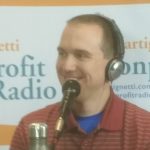
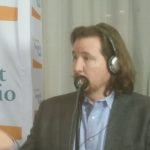







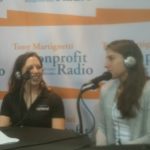
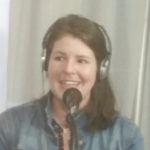 Self-described “data nerd” Emily Patterson talks you through online tracking and analyzing of your offline activity. She’s founder of
Self-described “data nerd” Emily Patterson talks you through online tracking and analyzing of your offline activity. She’s founder of 


